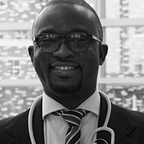Physiatry rising: on engaging the next generation of physiatrists
One of the quintessential rituals of medical school is the clinical rotation. Medical students have the opportunity to spend between 4 -12 week blocks with various departments and clinical specialties as a way of introduction to the respective fields, and to build basic foundational knowledge and competencies.
For most medical schools clinical rotations happen between the 3rd and 4th years, while other schools start clinical clerkships in the 2nd year. Breadth rather than depth is usually the object of the clerkships. The classical clinical rotations include Internal Medicine, Pediatrics, Obstetrics and Gynecology, Surgery, Psychiatry and Neurology.
The choice to focus on these core rotations is historical, although this means that 88% of all medical students get through medical school without ever getting any exposure to disability management, the evolution of physical impairments that develop as a result of chronic disease vs. aging, or the associated loss of functionality with major injury or trauma. Yet, it is these very skills coupled with team leadership that future physicians need to succeed in an environment that will place a high premium on value-based outcomes with function at its core. These are the skills that physiatry imbues in a physician. Nonetheless few medical schools require Physiatry aka Physical Medicine & Rehabilitation as a core clerkship.
A recent study showed that of the 131-plus medical schools in the United States, only 12% require a PM&R rotation. PM&R clubs and interest groups exist at only 48% of medical schools. Since very few students get any formal brush with the speciality throughout their training, many do not consider this as a possible career.
This is an under-service to the 56.7 million people living with disabilities in the United States, a number which continues to grow, in part due to casualties of recent wars in Iraq and Afghanistan.
As Chair of the Resident and Fellow Council of the Association of Academic Physiatrists, I’m working together with other sister organizations to formulate a national strategy and campaign to increase the number of medical student interest groups across the country to close to 100% in the next 5–10 years. Major changes in the medical school curriculum with recognition of disability management and focus on PM&R as a core clerkship would augur well for raising awareness about this impactful and life-affirming specialty.
We are also working on creating a national database that will catalog all PM&R interests groups in all medical schools in the United States.
This year, I spearheaded formation of the first ever medical student PM&R interest group in the 123 year history of Johns Hopkins University School of Medicine.
Rather than wait till the end of the 3rd year clerkships for a post-hoc introduction to the field, a team including 2 senior medical students, myself and others, organized a table at the student fair, the very first day of medical school. We introduced the specialty to the new students on a seminal day in what will hopefully be a lifelong medical journey. Reaching students at this nascent phase of training is thought to influence subsequent specialty choices 3–4 years later. There is a lot of excitement about the Hopkins PM&R interest group.
With the full support of the department’s new chair, Dr. Pablo Celnik, we hope the momentum we have started this year will carry on and spread to other institutions.
As the competitiveness of the specialty continues to rise each year and as more medical students gain awareness through creation of more interest groups, as well as transformations in the medical curriculum to address physical/cognitive impairments and disability, physiatry will gain recognition for its important role in the health economy. With aging of the population, the rise in chronic disease, chronic pain, neuromuscular and musculoskeletal conditions, post-war traumatic and dysvascular populations, demand for physiatry will continue to increase. Certainly a commensurate rise in supply will take strategic and conscientious planning, as well as more education to erase the blind nescience that exists about the specialty.
See link: https://goo.gl/photos/AHwebgmsq4MR9Ddd9 for more pictures of our recent events
This article originally was published in Physiatry in Motion Issue #3, October 25, 2016
